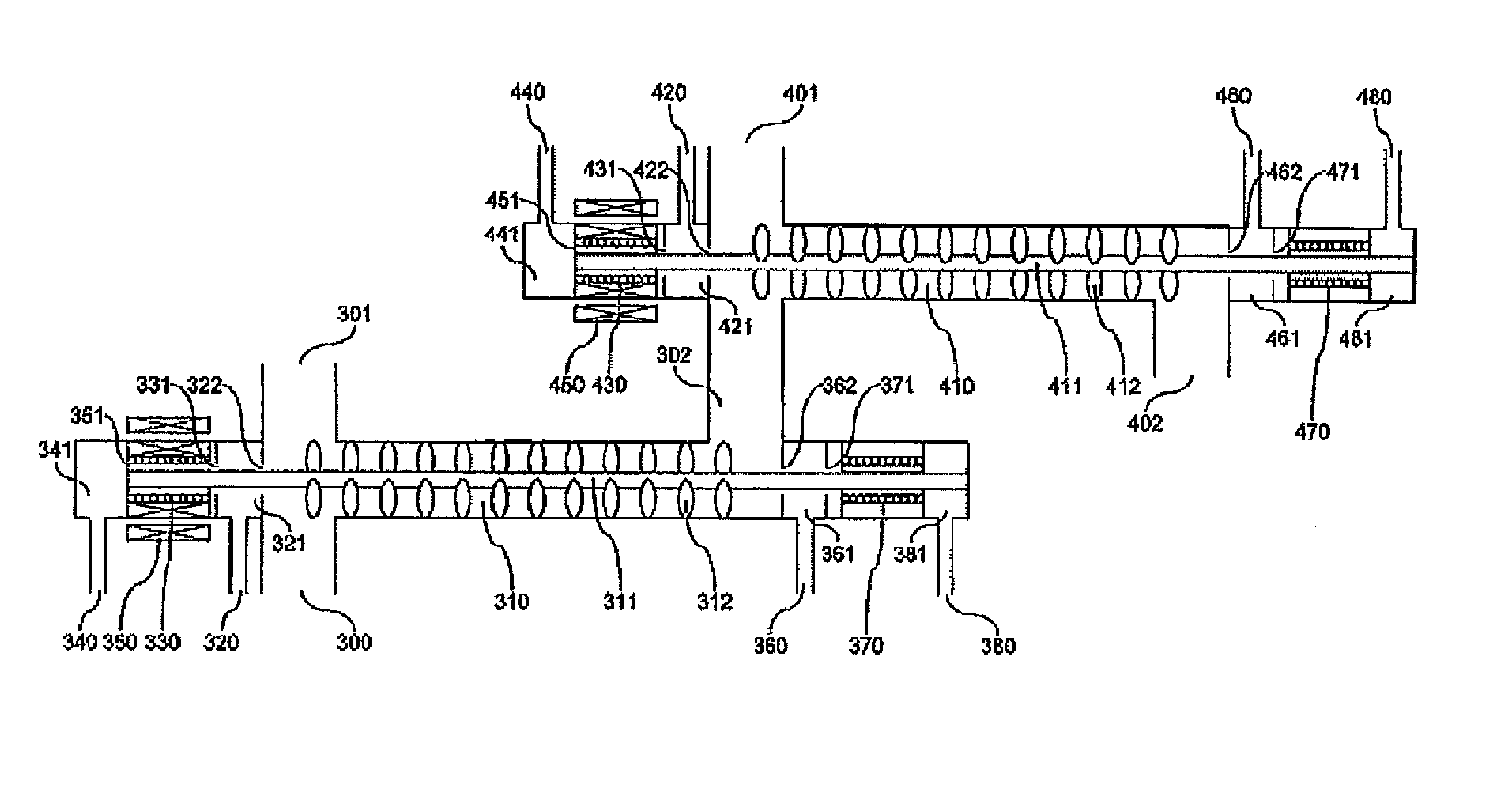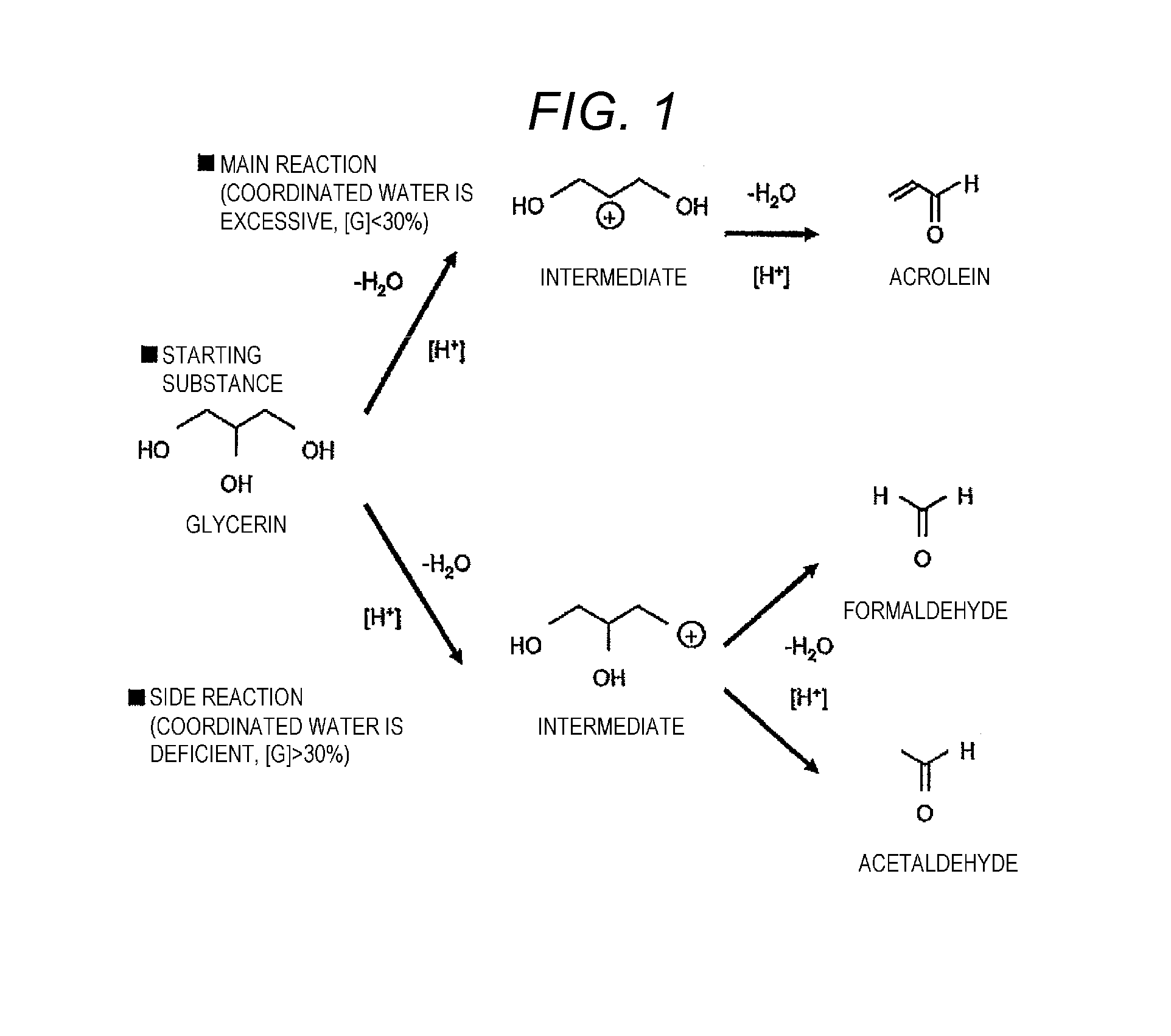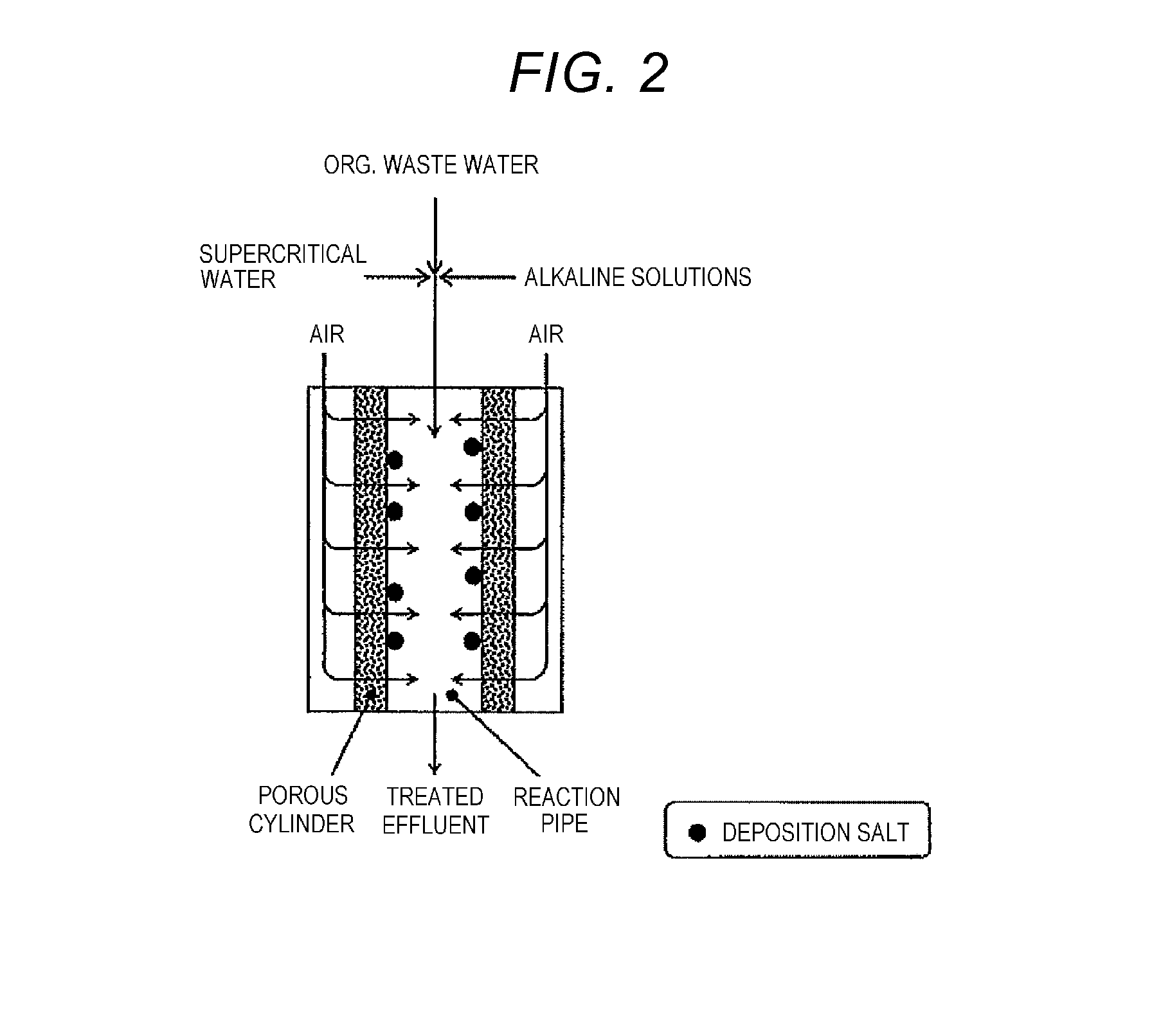Reaction apparatus and method using supercritical water or subcritical water
a technology of supercritical water and water, applied in the direction of glucose production, organic chemistry, bulk chemical production, etc., can solve the problems of difficult to precisely control the pressure, high energy consumption for raising the temperature and pressure of water, and low concentration of glycerin in the raw material, so as to reduce the amount of tar produced, the effect of high raw material concentration and different density
- Summary
- Abstract
- Description
- Claims
- Application Information
AI Technical Summary
Benefits of technology
Problems solved by technology
Method used
Image
Examples
example 1
[0034]FIG. 6 shows a mixing pipe according to Example 1 of this invention and shows an example of a structure of a mixing flow path with a built-in agitator. A raw material fluid containing glycerin and sulfuric acid and a supercritical water are sent from an inlet flow path (300) and an inlet flow patch (301), respectively to a mixing pipe (310). An agitation blade (312) is connected to an agitation shaft (311) set within the mixing pipe (310) and rotated while allowing a center shaft of the mixing flow path to act as a rotating shaft by means of an upstream-side bearing (330) and a downstream-side bearing (370) of the mixing flow path, thereby performing mixing of the fluid.
[0035]The agitation blade is rotated by the kinetic energy of the fluid flowing through the mixing flow path. A diameter of the mixing flow path is from 1 to 10 cm, and a flow rate is desirably from 2 to 10 m / sec. This is because when the flow rate is less than 2 m / sec, the mixing performance is lowered, wherea...
example 2
[0040]FIG. 9 shows a mixing pipe according to Example 2 of this invention and shows other example of a structure of a mixing flow path with a built-in agitator. In Example 2, the agitation blade is rotated by an external rotation drive system set outside the mixing pipe.
[0041]An upstream-side bearing (330) and a downstream-side bearing (370) of the mixing pipe are cooled by cooling waters flown from an upstream-side cooling water inlet (340) and a downstream-side cooling water inlet (380), respectively. In addition, an internal magnet (351) connected to a rotating shaft is cooled to not higher than the Curie point with a cooling water flown from the cooling water inlet (340).
[0042]In addition, it is necessary that a pressure of the cooling water is higher than a reaction pressure. According to this, the incorporation of a reaction solution into the cooling water is prevented, thereby avoiding a concern of deposition of by-products contained in the reaction solution, such as tar and ...
example 3
[0046]FIG. 10 shows a mixing pipe according to Example 3 of this invention and shows other example of a structure of a mixing flow path with a built-in agitator. Example 3 is identical with Example 2 in the point that the agitation blade is rotated by an external rotation drive system set outside the mixing pipe. However, Example 3 is different from Example 2 in the point that the bearing is made of a magnet, and hence, the structure can be simplified.
[0047]In Examples 2 and 3 shown in FIGS. 9 and 10, after an optimum reaction time elapses within a mixing pipe (310), the cooling water is sent using a cooling water high pressure pump (491) shown in FIG. 5, and the reaction is stopped by means of direct mixing of the cooling water. On that occasion, in the case where the concentration of glycerin is 20%, since the optimum reaction time is from 1 to 2 seconds, it is necessary to subject the reaction solution to high-speed cooling to the reaction stopping temperature for a time of about...
PUM
| Property | Measurement | Unit |
|---|---|---|
| temperature | aaaaa | aaaaa |
| flow rate | aaaaa | aaaaa |
| diameter | aaaaa | aaaaa |
Abstract
Description
Claims
Application Information
 Login to View More
Login to View More - R&D
- Intellectual Property
- Life Sciences
- Materials
- Tech Scout
- Unparalleled Data Quality
- Higher Quality Content
- 60% Fewer Hallucinations
Browse by: Latest US Patents, China's latest patents, Technical Efficacy Thesaurus, Application Domain, Technology Topic, Popular Technical Reports.
© 2025 PatSnap. All rights reserved.Legal|Privacy policy|Modern Slavery Act Transparency Statement|Sitemap|About US| Contact US: help@patsnap.com



